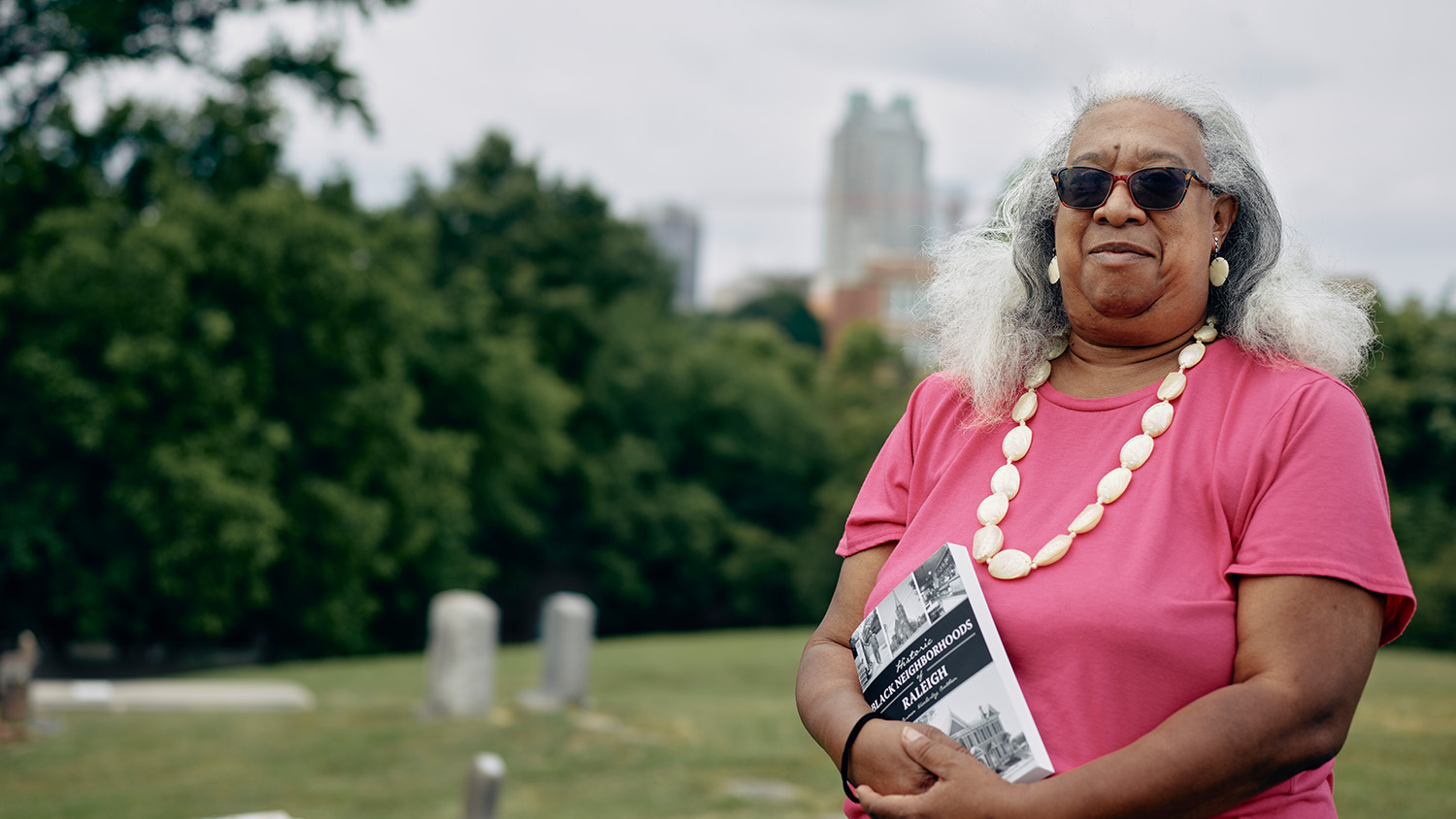Notable Neighborhoods
Carmen Cauthen ’89 details Black life and housing patterns in her new book, Historic Black Neighborhoods of Raleigh.

When she was a clerk at the N.C. General Assembly, Carmen Cauthen ’89 had designs on writing a book. She envisioned it centering on her mother, Cliffornia Wimberley, a Raleigh educator who helped lead efforts to desegregate city and county schools.
Well, 10-plus years retired from her work at the state capitol, Cauthen has delivered a book, but it’s an altogether different story. Historic Black Neighborhoods of Raleigh tells the history of Wake County’s Black citizens, where they lived and how some of those imprints in Raleigh have disappeared.
Cauthen, 64, says she stumbled upon two master’s theses detailing Raleigh’s segregationist era a couple years back when she was researching Black housing in Raleigh. “What came to me was that there was a reason the majority of Black people were in Southeast Raleigh,” says Cauthen, “. . . When I started doing the research for the book, I realized Southeast Raleigh was platted based on real estate investors who bought land after the Civil War. And so those lots were platted narrow because they were trying to cram as many people into their land as they could to make as much money as they could.”
“There was a reason the majority of Black people were in Southeast Raleigh.”
– Carmen Cauthen
Historic Black Neighborhoods of Raleigh traces the lives of Black people from slavery up through the 1960s, and details the significance of local churches, libraries, recreational sites and community leaders, like Calvin Lightner, father of Clarence Lightner, Raleigh’s first Black mayor, to help tell Raleigh’s story of the Black experience. “It’s just fascinating to me to know the things that Black people did that nobody knows they did,” Cauthen says.
Cauthen says she’s working on a project about formerly enslaved people whose stories were collected by the Works Progress Administration in the 1930s. And there’s always a possible book about her mother. Both projects deal with stories of Black stamina that disappear every day, Cauthen says. “As elders pass, that information goes away.”


